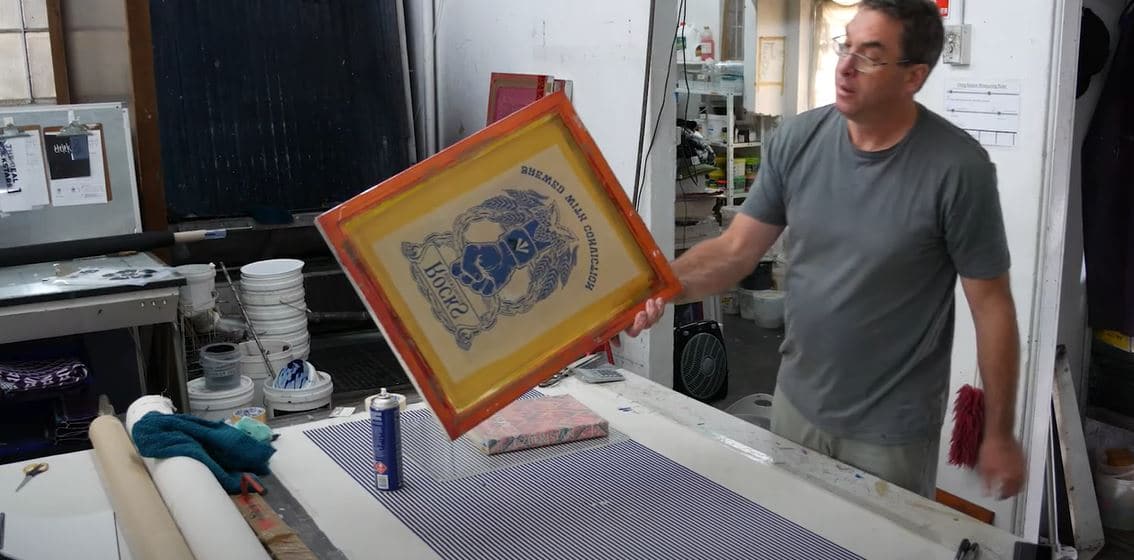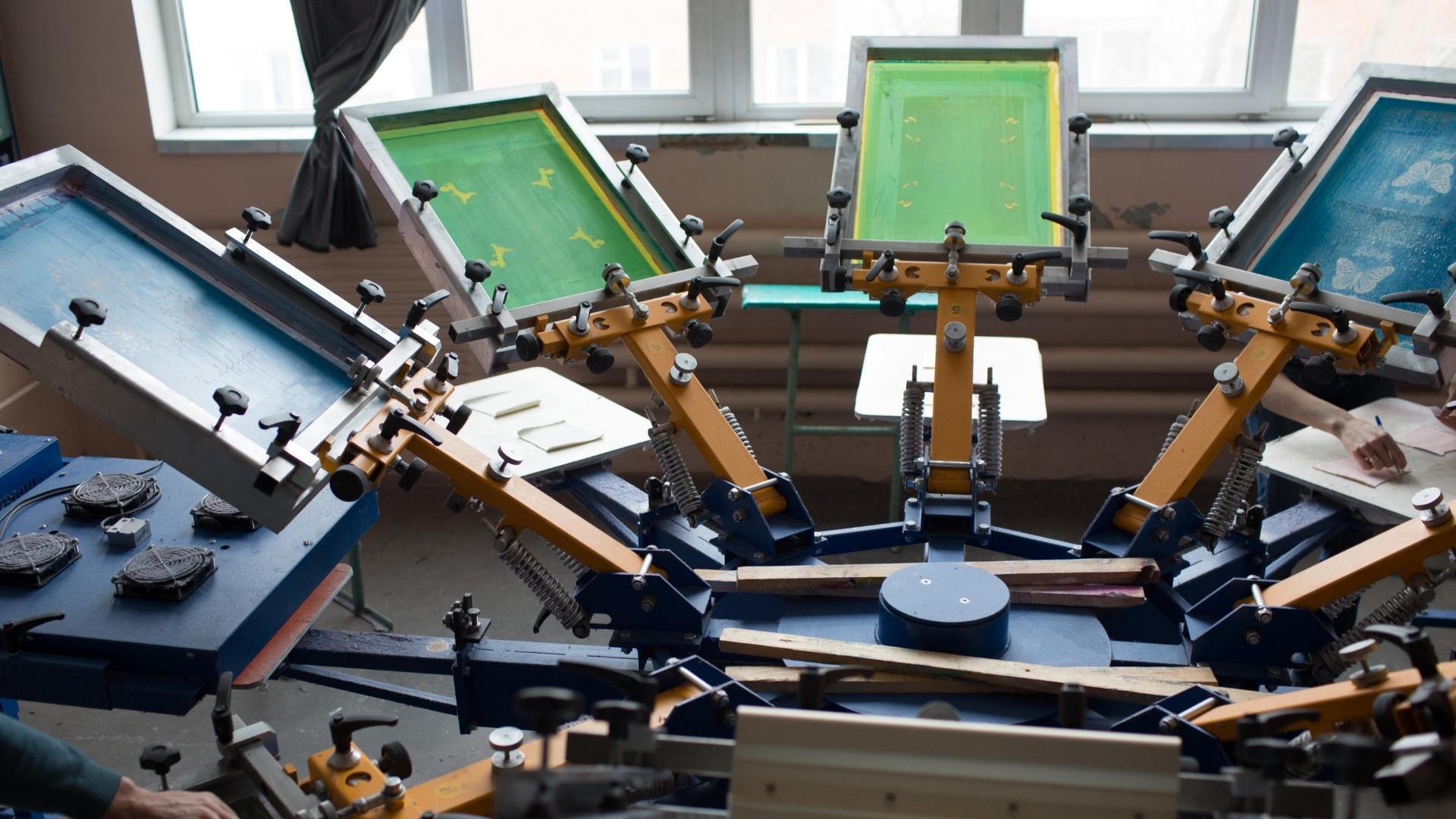ChatGPT said: How 10:9 Design Texas combines creativity and durability in screen printing
Discover the Various Kinds of Screen Printing Techniques for Your Following Project
Screen printing provides a diverse series of techniques that can enhance any type of creative task. From conventional approaches like serigraphy to modern-day developments such as direct-to-garment printing, each strategy has its one-of-a-kind benefits. Specialty choices, consisting of green and metal inks, present a lot more possibilities. Recognizing these methods can substantially influence the last end result. However, the difficulty hinges on choosing the most appropriate technique for certain requirements and preferred effects. What factors should one think about?

The Fundamentals of Screen Printing
Although screen printing might seem complicated, it is essentially a straightforward procedure that includes transferring ink through a mesh screen onto different surfaces. The technique starts with the creation of a stencil, which specifies the layout to be published. This stencil is connected to a mesh screen, typically made from polyester or nylon. When the pattern remains in place, ink is applied to the screen and pushed with the mesh making use of a squeegee, causing the desired pattern being printed on the underlying material.
Screen printing can be carried out on a large array of substratums, including paper, material, and plastic, making it a flexible option for different jobs. The procedure enables for lively shades and detailed layouts, making it prominent in markets such as advertising, art, and fashion. Recognizing these essentials furnishes individuals with the fundamental expertise called for to check out more advanced strategies in screen printing.
Typical Screen Printing Techniques
Typical screen printing methods have been employed for centuries, preserving the workmanship and creativity of this method. This approach makes use of a mesh screen to transfer ink onto a substratum, such as textile or paper, permitting dynamic and lasting styles. The process starts with producing a stencil, which obstructs specific areas of the screen to regulate where the ink will certainly be applied.
One popular strategy is serigraphy, commonly utilized for creative prints and minimal editions. Another is making use of water-based inks, which are environmentally friendly and supply a soft feeling on textiles - 10:9 Design Texas. Furthermore, typical methods can include manual printing, where artisans apply ink with a squeegee, guaranteeing precision and interest to detail
These methods stay valued in the sector for their responsive high quality and the one-of-a-kind appearances they generate, interesting both makers and customers who value the heritage of screen printing.
Digital Screen Printing Innovations
As the demand for faster production and modification in the printing industry has risen, digital screen printing advancements have actually become a game-changer. This technology mixes typical screen printing approaches with digital processes, allowing for quick prototyping and complex layouts that were previously challenging to achieve. One significant innovation is the introduction of direct-to-garment (DTG) printing, which helps with high-grade, full-color prints on various fabrics without the need for displays. Furthermore, improvements in ink formulations have actually caused environment-friendly choices that maintain dynamic shades while reducing ecological effect. Using automated systems better improves manufacturing, lowering labor expenses and enhancing precision. These advancements not just satisfy tiny batch orders and individualized designs however likewise enable quicker turn-around times, making them ideal for organizations concentrated on conference consumer needs in a fast-paced market. Digital screen printing, subsequently, represents an essential evolution in the domain of printing strategies.
Specialty Screen Printing Techniques
Discovering specialty screen printing methods exposes a varied variety of techniques that press the borders of creative thinking and functionality in the printing industry. Among these, glow-in-the-dark inks offer an one-of-a-kind aesthetic impact, making styles come active in low-light conditions. Metallic inks, known for their glittering surface, include a touch of deluxe to printed products. Another innovative method is discharge printing, which eliminates dye from the material instead of including ink, leading to a soft, vintage feel. High-density printing creates an increased texture on the surface, enhancing tactile interaction. Additionally, water-based inks are acquiring popularity for their lively shades and decreased ecological effect. Each of these specialized strategies deals with certain layout requirements, making it possible for brands and artists to create standout items that reverberate with their audiences. By leveraging these methods, services can raise their screen printing jobs to new heights, guaranteeing memorable impacts.
Eco-Friendly Screen Printing Options
Environmentally friendly screen printing options are gaining grip as the market moves towards sustainability. Lasting ink selections and the usage of eco-friendly materials are essential parts in reducing the ecological influence of the printing process. By adopting these methods, screen printers click this site can contribute to a much more lasting future while keeping high-grade outcomes.
Sustainable Ink Options

Biodegradable Products Use
As the screen printing market advances, the consolidation of eco-friendly materials is becoming progressively crucial for ecologically conscious practices. Designers and suppliers are currently checking out inks and substrates made from natural, eco-friendly sources that decompose a lot more successfully than traditional counterparts. These naturally degradable alternatives reduce plastic waste and lessen environmental effect, lining up with the expanding need for lasting items.
Usual instances consist of water-based inks and natural cotton textiles, both of which minimize damaging chemicals and promote eco-friendliness. Brands that embrace these materials commonly improve their market charm, drawing in customers who prioritize sustainability. As awareness of environmental issues continues to increase, the shift towards biodegradable products in screen printing is most likely to obtain energy, fostering a greener sector requirement.
Selecting the Right Technique for Your Project
How can one determine one of the most appropriate screen printing method for a certain job? The decision depends upon numerous aspects, including the product to be try this site published on, the complexity of the design, and the wanted production volume - 10:9 Design reviews. Direct-to-garment printing is suitable for intricate styles with various shades, while conventional screen printing succeeds for larger runs Going Here of less complex graphics.
Additionally, factor to consider of the end-use of the printed thing is vital. For exterior applications, methods that supply sturdiness and weather resistance, such as plastisol ink, may be favored. On the other hand, environmentally-conscious tasks may profit from water-based inks or naturally degradable products.
Inevitably, understanding the job's one-of-a-kind requirements permits an enlightened choice, making certain both aesthetic charm and practical long life. By assessing style intricacy, product compatibility, and production scale, one can successfully pick one of the most suitable screen printing method to satisfy their task's objectives.
Frequently Asked Concerns
What Is the Background of Screen Printing?
Screen printing came from old China around 1000 AD, developing with Japan and Europe. By the 20th century, it came to be preferred in business art and style, revolutionizing how designs were produced and distributed internationally.

How Do I Prepare Artwork for Screen Printing?
To prepare art work for screen printing, one must assure high resolution, use an ideal color mode, develop separate layers for every shade, and transform text to details, assuring compatibility with the printing process and desired result.
What Products Are Finest for Screen Printing?
The most effective materials for screen printing include high-grade inks, resilient screens, and appropriate substratums like cotton, polyester, or blends. In addition, making use of appropriate emulsion and squeegees can improve the printing process and outcomes.
Can I Evaluate Publish in the house?
Yes, screen printing in the house is feasible. With the appropriate materials, configuration, and methods, individuals can produce premium prints. Nonetheless, mindful factor to consider of work space and tools is essential for successful results.

What Are Usual Mistakes in Screen Printing?
Typical blunders in screen printing include incorrect direct exposure times, inadequate ink consistency, imbalance of displays, insufficient cleansing of products, and neglecting to evaluate prints. These mistakes can compromise the high quality and precision of the end product.
Screen printing may appear complicated, it is basically an uncomplicated process that includes moving ink via a mesh screen onto numerous surfaces. As the demand for faster production and customization in the printing industry has risen, electronic screen printing technologies have arised as a game-changer. Exploring specialized screen printing methods reveals a diverse range of techniques that push the limits of imagination and functionality in the printing sector. The ideal materials for screen printing include premium inks, long lasting screens, and appropriate substrates like cotton, polyester, or blends (10:9 Design Abilene). Typical mistakes in screen printing include incorrect exposure times, poor ink uniformity, imbalance of displays, insufficient cleansing of materials, and neglecting to examine prints